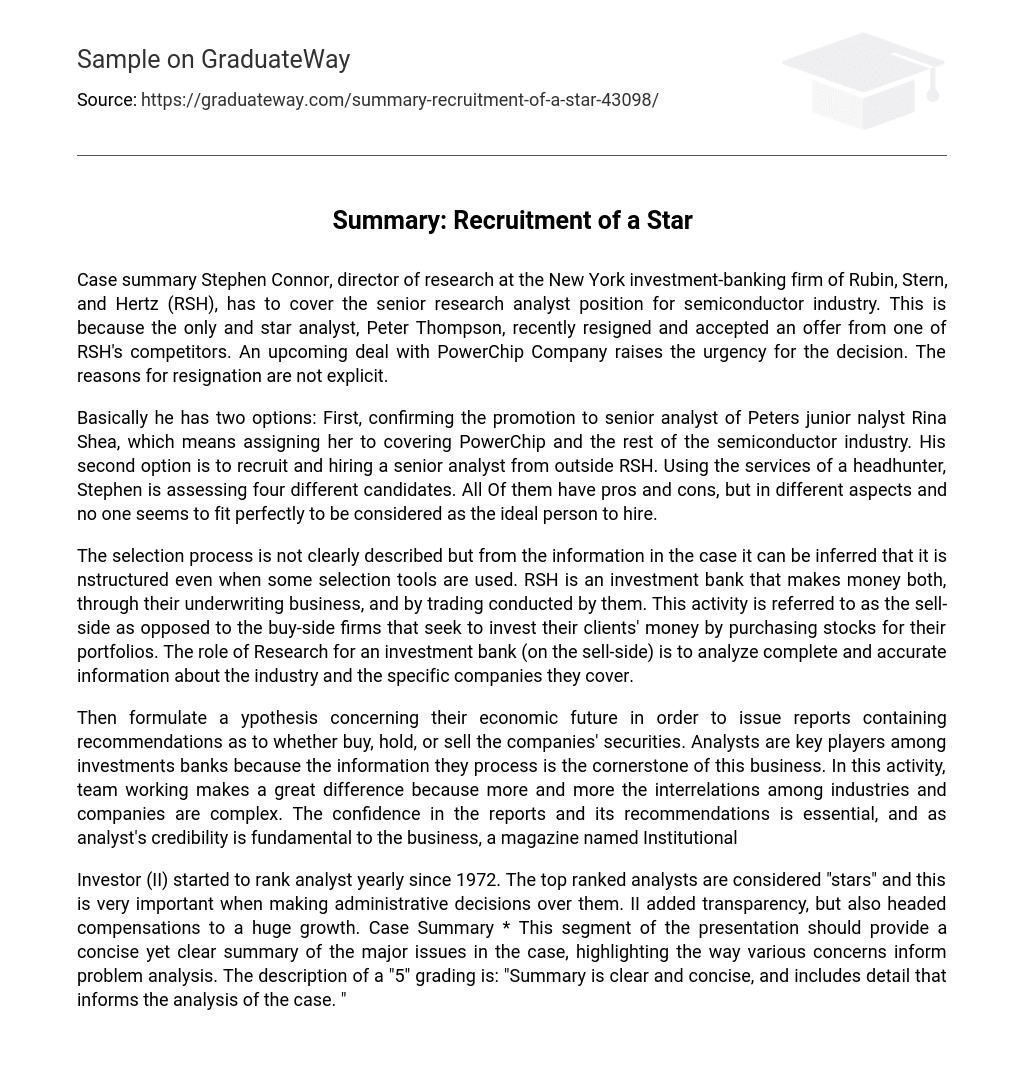Case summary Stephen Connor, director of research at the New York investment-banking firm of Rubin, Stern, and Hertz (RSH), has to cover the senior research analyst position for semiconductor industry. This is because the only and star analyst, Peter Thompson, recently resigned and accepted an offer from one of RSH’s competitors. An upcoming deal with PowerChip Company raises the urgency for the decision. The reasons for resignation are not explicit.
Basically he has two options: First, confirming the promotion to senior analyst of Peters junior nalyst Rina Shea, which means assigning her to covering PowerChip and the rest of the semiconductor industry. His second option is to recruit and hiring a senior analyst from outside RSH. Using the services of a headhunter, Stephen is assessing four different candidates. All Of them have pros and cons, but in different aspects and no one seems to fit perfectly to be considered as the ideal person to hire.
The selection process is not clearly described but from the information in the case it can be inferred that it is nstructured even when some selection tools are used. RSH is an investment bank that makes money both, through their underwriting business, and by trading conducted by them. This activity is referred to as the sell-side as opposed to the buy-side firms that seek to invest their clients’ money by purchasing stocks for their portfolios. The role of Research for an investment bank (on the sell-side) is to analyze complete and accurate information about the industry and the specific companies they cover.
Then formulate a ypothesis concerning their economic future in order to issue reports containing recommendations as to whether buy, hold, or sell the companies’ securities. Analysts are key players among investments banks because the information they process is the cornerstone of this business. In this activity, team working makes a great difference because more and more the interrelations among industries and companies are complex. The confidence in the reports and its recommendations is essential, and as analyst’s credibility is fundamental to the business, a magazine named Institutional
Investor (II) started to rank analyst yearly since 1972. The top ranked analysts are considered “stars” and this is very important when making administrative decisions over them. II added transparency, but also headed compensations to a huge growth. Case Summary * This segment of the presentation should provide a concise yet clear summary of the major issues in the case, highlighting the way various concerns inform problem analysis. The description of a “5” grading is: “Summary is clear and concise, and includes detail that informs the analysis of the case. “





